
Conrail Point-No-Point Bridge Replacement Launched
Written by William C. Vantuono, Editor-in-Chief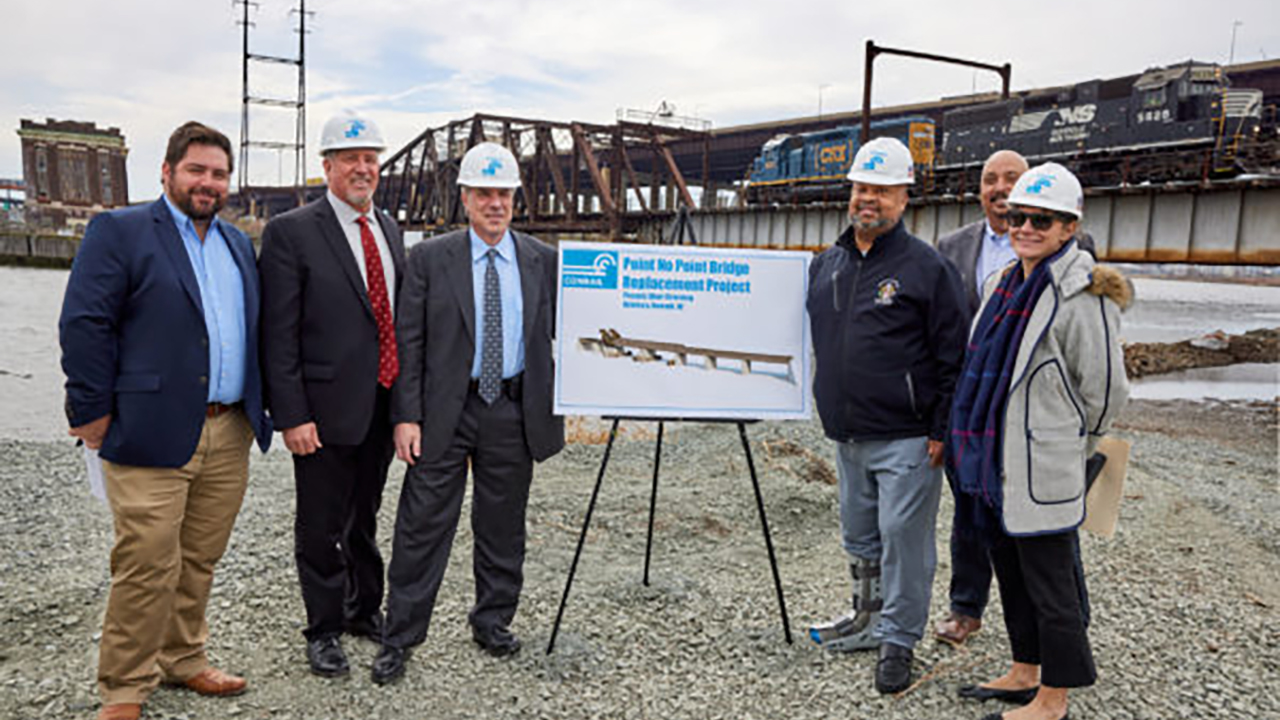
Congressman Donald Payne, Jr., (third from right) with Conrail executives (left to right) Ryan Hill, Brian Gorton, Eric Levin, Mo Megali and Jocelyn Hill.
New Jersey Congressman Donald Payne, Jr. (D-N.J.), Chairman of House Transportation and Infrastructure Committee, Subcommittee on Railroads, Pipelines and Hazardous Materials, on May 2 helped launch a replacement project of the Conrail Shared Assets Point-No-Point Bridge with executives from Conrail, Norfolk Southern, CSX, and members of United Steelworkers of America and Heavy and General Laborers Local 472.
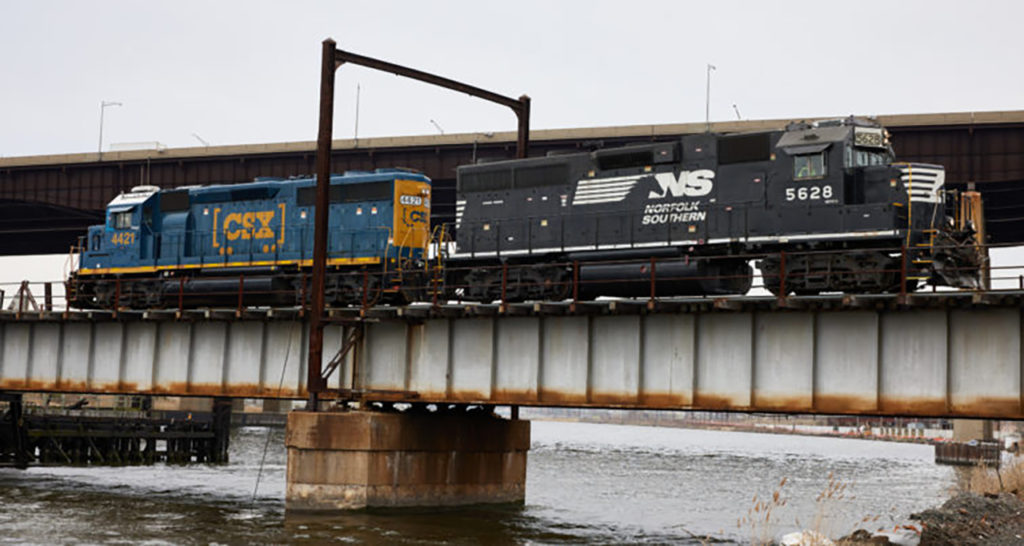
Point-No-Point Bridge, built in 1901, serves as an important freight artery through the Conrail Shared Assets North Jersey Area, moving almost 7,000 containers a day connecting east to New York City, north to New England and west to Chicago.
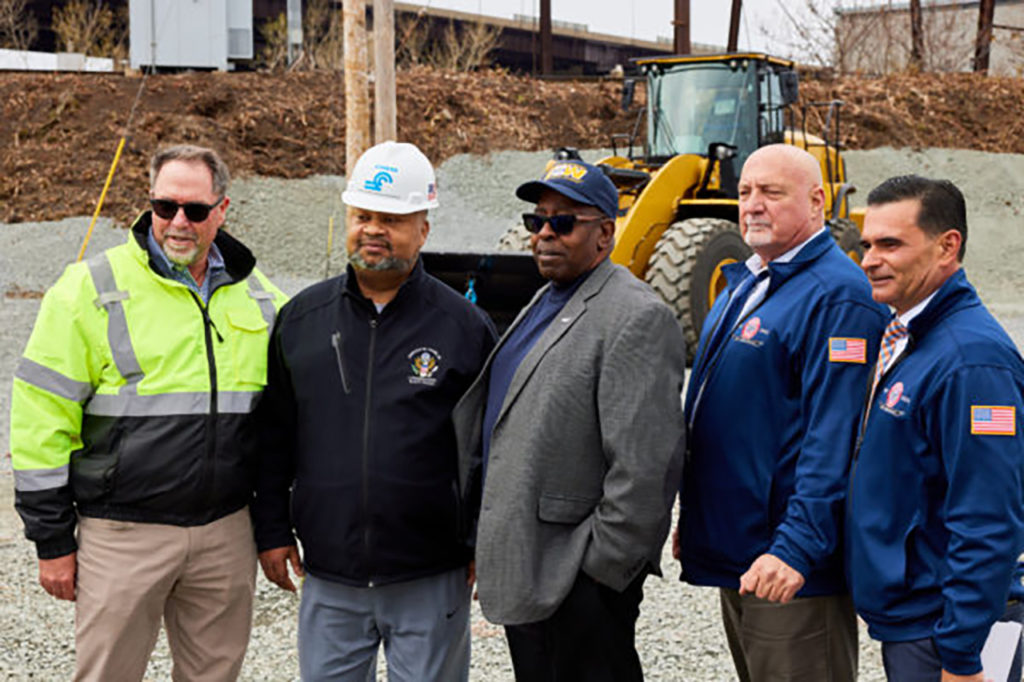
The bridge replacement project will create 110 new prevailing wage union jobs for the local workforce of New Jersey and will also benefit the Passaic River Superfund remediation by preventing additional truck congestion carrying contaminated dredged silt through local communities.
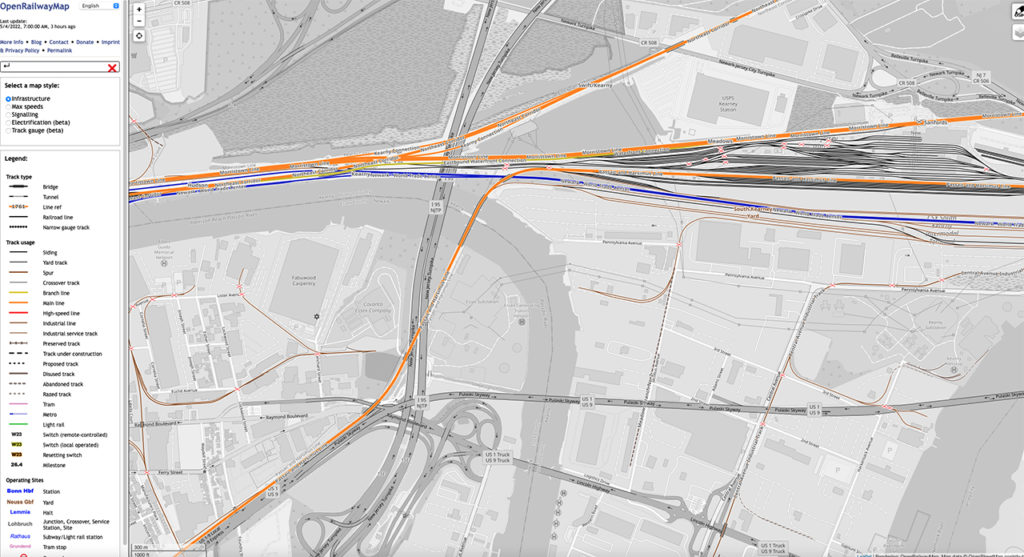
Point-No-Point Bridge crosses the Passaic River between Newark and Kearny, N.J., in the New Jersey Meadowlands. The swing bridge is the fourth from the river’s mouth at Newark Bay and is 2.6 milesupstream from it. A camelback through-truss bridge, it is owned by Conrail as part of its North Jersey Shared Assets area and carries the Passaic and Harsimus Line used by CSX Transportation and Norfolk Southern. CSX’s River Subdivision accesses the line via Marion Junction.
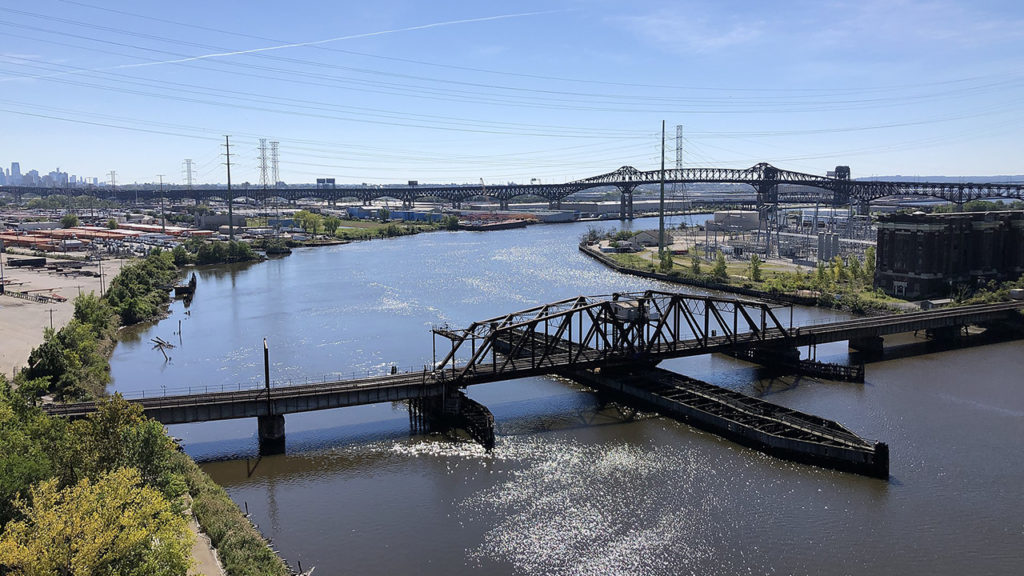
A crossing of the Passaic River at Point-No-Point was originally built by the Pennsylvania Railroad (PRR) in the early 1890s to bypass its main line and thus shorten the distance to its rail yard at Harsimus Cove. At the time the railroad crossed the Passaic at the Centre Street Bridge (no longer in existence) near its Newark station, at the site of today’s New Jersey Performing Arts Center. The new Pennsylvania Cut-off diverged from the line (now today’s Northeast Corridor) at Waverly Yard, crossed the Newark Ironbound community and the Passaic to the Kearny Meadows and then crossed the Hackensack River on the Harsimus Branch Lift Bridge. It rejoined the main line at the Bergen Hill Cut, but diverged again using the Harsimus Stem Embankment to reach its freight yards on the Hudson River waterfront north of its passenger terminal at Exchange Place. The PRR also used the Lehigh Valley Railroad Bridge (now Conrail’s Upper Bay Bridge) to reach its car float operations at Greenville Yard on Upper New York Bay.
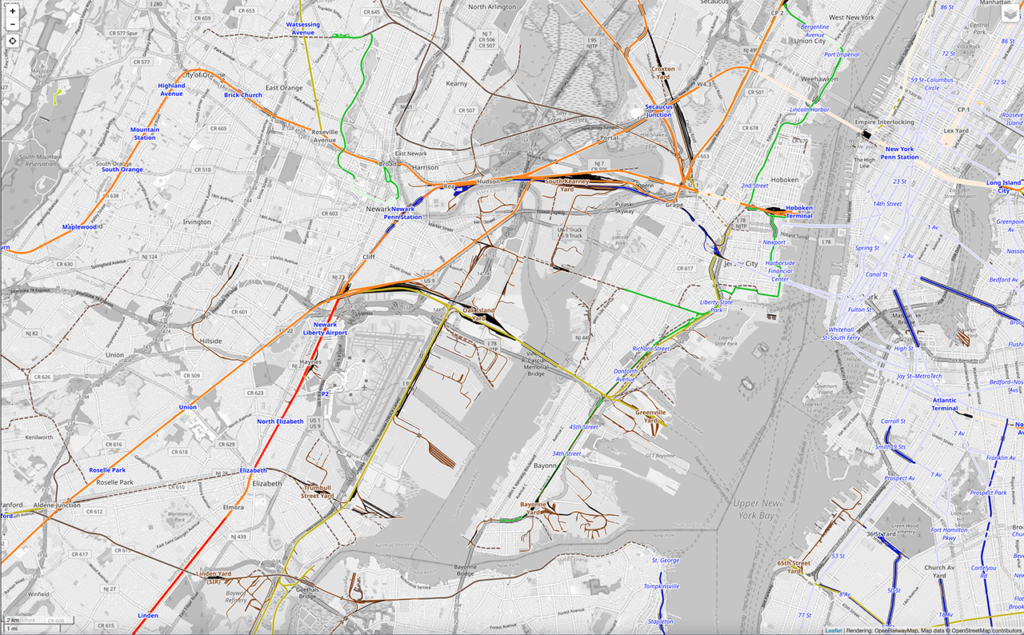
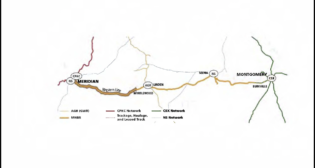

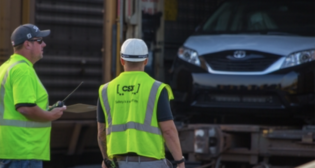
![“This record growth [in fiscal year 2024’s third quarter] is a direct result of our innovative logistic solutions during supply chain disruptions as shippers focus on diversifying their trade lanes,” Port NOLA President and CEO and New Orleans Public Belt (NOPB) CEO Brandy D. Christian said during a May 2 announcement (Port NOLA Photograph)](https://www.railwayage.com/wp-content/uploads/2024/05/portnola-315x168.png)